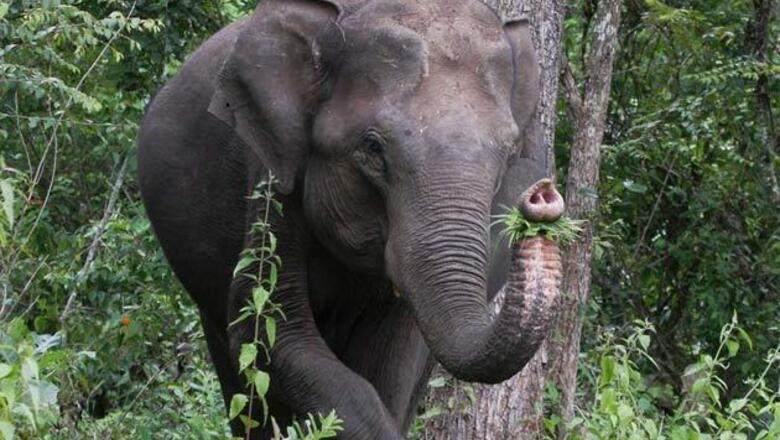
views
A tiger death raises a million eye brows. An investigation is immediately sought. Conservationists make a hue and cry demanding the arrest of the poacher.
But they don't show same intensity of concern when an elephant dies due to poaching or electrocution. Invariably the blame is thrust on elephants for crop-raiding. Farmers who illegally draw power from electric lines and trigger-happy poachers get away scot free.
Like the critically endangered tiger, the elephant too is a Schedule One animal, drawn under the Wildlife Protection Act of 1972. In the last six years only one farmer has been apprehended. We have lost around 200 elephants due to illegal activities during then and now.
As it did in 2007, The Ministry of Environment and Forests (MOEF) has taken up the onerous exercise of estimating elephant numbers across India. The onus will be on southern India which is home to almost 70 per cent of the elephant population in the country.
Teams led by elephant experts and research officers will scan the forest reserves and corridors to enumerate elephant numbers. The collated figures will show whether the numbers have either increased or decreased in five years. It will be indicative of the elephants' future.
Concerned that the elephant numbers were increasing while habitats were being fragmented, the MOEF had organised a debate on the need to cull elephants. Thankfully, expert and public opinion, which wanted population dynamics and demography to be studied over a five year period, stopped the government in its culling track.
Human intervention around in elephant corridors has been the biggest bane. It is hard to believe that the Karnataka government granted forest land to the Central Reserve Police Force (CRPF) in Banngerghatta despite being aware that elephants regularly traverse into the outskirts of Bangalore. With CRPF clearing forest cover, the corridor to Turalli forest has been fragmented.
This is just one example of how insensitive we are to our own problems. We destroy the elephants' natural habitat, they will come to our kitchen looking for food.
On an average 50 elephants die every year due to electrocution, poisoning, poaching and shooting in South India. Almost 50 per cent of such deaths occur in Karnataka. But the government has done precious little to curb illegal activity. As such the gentle giants of our forests continue to perish frequently within and on the periphery of forests.
It is disturbing that Karnataka has lost seven elephants in a week. As statistics reveal two were shot by irate estate owners; one was electrocuted; two died under mysterious circumstances in Nagarhole; two were killed by tigers. Natural deaths are acceptable. But not when these intelligent and social animals are murdered.
NGOs insist that Karnataka has lost 117 elephants over three years due to electrocution, poisoning and poaching, but Ajay Mishra. Director, Project Elephant, contests the numbers. He believes electrocution deaths have reduced significantly.
Thanks to the result of solar fencing in Bandipur national park, only 13 pachyderms died due to electrocution during 2011-12. However, cases of shooting and poisoning have increased in the forest surrounding Kodagu, where coffee planters have been against erection of solar fencing and digging of elephant proof trenches (EPT). They must have a reason for that.
In the past, electrocution, poisoning and poaching incidents had been recorded as natural deaths by forest staff to avoid investigation and media attention. This subversive ploy had been brought to light by the Forest Cell when it revisited all cases of elephant deaths in 2007.
If we take the figures for southern India, elephant deaths caused by illegal means would rise manifold. Virtually every week we read or hear about tusks being seized by the police. Unless, poachers are dealt with firmly, the future of the elephant could be bleak.
Southern India is the only lung space available for this endangered animal. Let's not destroy and fragment its corridors.


















Comments
0 comment